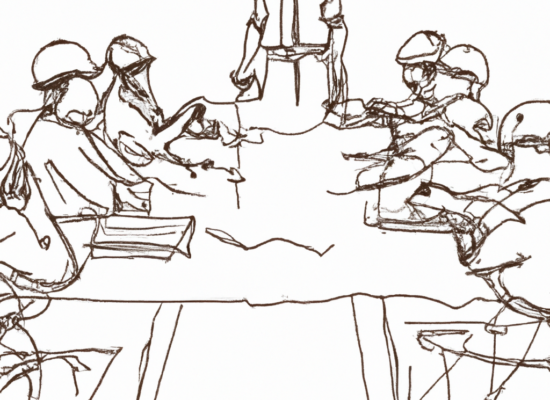Navigating the Different Project Delivery Methods: Understanding the Pros and Cons
When it comes to designing and constructing a building, there are many different project delivery methods to choose from. Each method has its own set of advantages and disadvantages, and it’s important to understand the differences between them to make the best decision for your project. In this article, we will explore the different project delivery methods, including Design Bid Award, Construction Manager as Advisor, Construction Manager as Constructor, Design Build, Integrated Project Delivery (IPD), and Conformance with Sustainability Requirements. We will discuss the benefits and drawbacks of each method, and provide examples of when each method is best suited.
Project Delivery: Design Bid Award Method Explained
The Design Bid Award is like a big contest. Architects, who are the people who design buildings, put out a call for contractors, who are the people who actually build the buildings. Contractors then put in a bid, which is like a proposal for how much they will charge to build the project. The architect chooses the contractor with the lowest bid, meaning the cheapest proposal.
There are some good things about the Design Bid Award method. For one, it’s a fair way for owners to choose a contractor because everyone has a chance to bid. And, the owner gets to pick the cheapest proposal. But, there are also some downsides to this method. Sometimes, the process can create a bad relationship between the owner and contractor, because the contractor wants to make as much money as possible, and the owner wants to spend as little as possible. Also, the price of the project can end up going up as the project goes on.
There are other things to consider when using the Design Bid Award method too. For example, public projects usually need to have a notice in the newspaper telling people that the project is up for bid. And, there are often changes made to the project before work begins, so the owner and architect needs to let the contractor know about those changes. And, the contractor needs to provide some kind of guarantee that they will finish the project and that they have the money to do it.
Overall, the Design Bid Award method is a way for owners to choose a contractor for their construction project that is fair and cost-effective. But, it’s important to be aware of the potential downsides and make sure to address them throughout the process.
Project Delivery: Construction Manager as Advisor (CMa) Explained
Construction Manager as Advisor (CMa) is another way to handle construction projects. In this method, the owner of the project works closely with a Construction Manager (CMa) throughout the design and construction process. The CMa acts as an advisor to the owner, helping to manage the project and make sure it stays on track.
There are different types of CMa agreements, including B132 “Owner/Architect CM as Advisor”, A132 “Owner/Contractor-CM as Advisor”, and A232 “General Conditions, CM as Advisor”.
In this method, the role of the architect is similar to the traditional delivery method, but with some key differences. For example, the architect works with the CMa during the design and development phase to make a preliminary cost estimate. The architect also submits a design schedule to both the CMa and the owner. If the budget is high, the architect works with the CMa to reduce it, or the owner can approve a change in budget or scope.
The contractor can be chosen through competitive bidding or negotiated with one contractor. Multiple prime contracts can be used, and no GMP and bidding/negotiation are done to award.
In summary, Construction Manager as Advisor (CMa) is a method that allows the owner to closely work with a CMa to manage the construction project, and the architect works with the CMa to make a preliminary cost estimate, and submits a design schedule to both the CMa and the owner.
Project Delivery: Construction Manager as Constructor (CMc) Explained
Construction Manager as Constructor (CMc) is another approach to managing construction projects. In this method, the owner of the project works closely with a Construction Manager (CMc) throughout the design and construction process. The CMc acts as a constructor and is responsible for the construction of the project.
There are different types of CMc agreements, including B133 “Owner/Architect CMc” and A201 “General Conditions of the Contract”.
In this method, the role of the architect is similar to the traditional delivery method, but with some key differences. For example, the architect works with the CMc during the design phases and the CMc provides cost, schedule, construction feasibility, etc. The architect also submits a design schedule to both the CMc and the owner.
The contract is usually Work Plus Fee with or without a Guaranteed Maximum Price (GMP). This means the CMc is paid for the work they do, and also gets a fee for managing the project. The GMP is a price agreed upon by both parties, which is not exceeded in any case, if exceeded, the CMc is liable for the extra cost.
In summary, Construction Manager as Constructor (CMc) is a method that allows the owner to closely work with
Project Delivery: Design Build Method Explained
Design Build is a method of delivering construction projects where the design and construction phases are combined under a single contract. The Design-Builder, Architect, and Owner work together as a team to deliver the project.
Design-Build is different from traditional delivery methods because it eliminates the need for the owner to contract with separate design and construction entities. Instead, the design-builder, architect, and owner select services from a list that the architect will provide. This method allows for a more efficient process, as the design-builder is able to provide input on the design during the early stages, and the architect is able to provide input on the construction during the later stages.
There are different types of Design-Build agreements, including B 143 “Design Builder/Architect”. This agreement outlines the roles and responsibilities of the design-builder, architect, and owner and the services that will be provided.
The Design-Build method can offer many benefits to the owner. One of the main benefits is that it allows the owner to have a single point of contact for the design and construction of the project, reducing the complexity and coordination required. Additionally, the design-builder is typically a contractor, so they bring a unique perspective to the design process, which can help identify cost savings and constructability issues early on.
The Design-Build method can also help to shorten the overall project schedule, as design and construction are completed simultaneously, rather than sequentially. This can lead to faster completion and earlier occupancy.
In summary, Design Build is a method of delivering construction projects where the design and construction phases are combined under a single contract. The Design-Builder, Architect, and Owner work together as a team to deliver the project. The design-builder, architect, and owner select services from a list that the architect will provide, which allows for a more efficient process, as the design-builder is able to provide input on the design during the early stages, and the architect is able to provide input on the construction during the later stages. This method can offer many benefits to the owner such as: having a single point of contact, reducing complexity and coordination, identifying cost savings and constructability issues early on, and shortening the overall project schedule.
Project Delivery: Integrated Project Delivery (IPD) Explained
Integrated Project Delivery (IPD) is a method of delivering construction projects where all the stakeholders involved in the project, including the owner, architect, and contractor, work together as a team from the start of the project to its completion.
IPD is different from traditional delivery methods because it creates a more collaborative approach to project delivery. Instead of each party working independently, all stakeholders are brought together to share knowledge and expertise, which helps to reduce costs and improve the overall quality of the project.
There are different types of IPD agreements, including B195 “Owner/Architect IPD” and A295 “General Conditions IPD”. These agreements are often multi-party agreements and single-purpose entity agreements, which outline the roles and responsibilities of each party involved in the project.
In IPD, the architect’s responsibilities during pre-construction are limited to agency review and buyout. Agency review is when the architect checks the building code with the Authority Having Jurisdiction (AHJ), and buyout is the process of selecting suppliers and finalizing prices. There is no major bidding or negotiation by the main players in IPD, unlike traditional methods.
IPD can be beneficial for the owner as it allows for more efficient and effective communication and collaboration among all parties involved in the project. This leads to a more efficient process, as well as a better final product. Additionally, there is a greater sense of accountability among the team, which can lead to cost savings and improved project outcomes.
In summary, Integrated Project Delivery (IPD) is a method of delivering construction projects where all the stakeholders involved in the project, including the owner, architect, and contractor, work together as a team from the start of the project to its completion. IPD creates a more collaborative approach to project delivery, where all stakeholders are brought together to share knowledge and expertise, which helps to reduce costs and improve the overall quality of the project. The architect’s responsibilities during pre-construction are limited to agency review and buyout. IPD can be beneficial for the owner as it allows for more efficient and effective communication and collaboration among all parties involved in the project, leading to a more efficient process, as well as a better final product.
Sustainability Requirements in Project Delivery
Sustainability is an important consideration in any construction project, and it’s important to ensure that all project delivery methods conform to sustainability requirements. This can be achieved through including specific clauses in the contracts for each project delivery method, such as B101 SP, A201 SP.
These contracts should include the owner’s goals for sustainability, objectives to achieve a green-building rating system, desired benefits to the environment and health, guidelines for improving energy efficiency, and a sustainability plan. This plan should outline the specific measures that will be taken to reduce the environmental impact of the project, such as the use of renewable energy sources, energy-efficient building materials, and water conservation strategies.
By including these clauses in the contracts, it ensures that sustainability is considered throughout the project, from the design phase to the construction phase. This can help to reduce the environmental impact of the project and promote the use of sustainable practices.
In summary, Sustainability is an important consideration in any construction project and it’s important to ensure that all project delivery methods conform to sustainability requirements. This can be achieved through including specific clauses in the contracts for each project delivery method, such as B101 SP, A201 SP. These contracts should include the owner’s goals for sustainability, objectives to achieve a green-building rating system, desired benefits to the environment and health, guidelines for improving energy efficiency, and a sustainability plan. This plan outlines the specific measures that will be taken to reduce the environmental impact of the project, such as the use of renewable energy sources, energy-efficient building materials, and water conservation strategies.
Balancing Efficiency, Cost-Effectiveness and Sustainability: The Perfect Project Delivery Method
In conclusion, there are many different project delivery methods to choose from when designing and constructing a building. Each method has its own set of advantages and disadvantages, and it’s important to understand the differences between them to make the best decision for your project. Whether you are looking for the most cost-effective solution or the most collaborative approach, there is a project delivery method that will suit your needs. By understanding the benefits and drawbacks of each method, you can make an informed decision about which project delivery method is best for your next construction project. Additionally, Conformance with Sustainability Requirements are becoming more important in the world today, and it’s important to include it in the project delivery process. By including sustainability clauses in contracts, it helps to reduce the environmental impact of the project and promote the use of sustainable practices.
 Copyright secured by Digiprove
Copyright secured by Digiprove 



